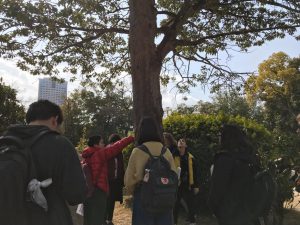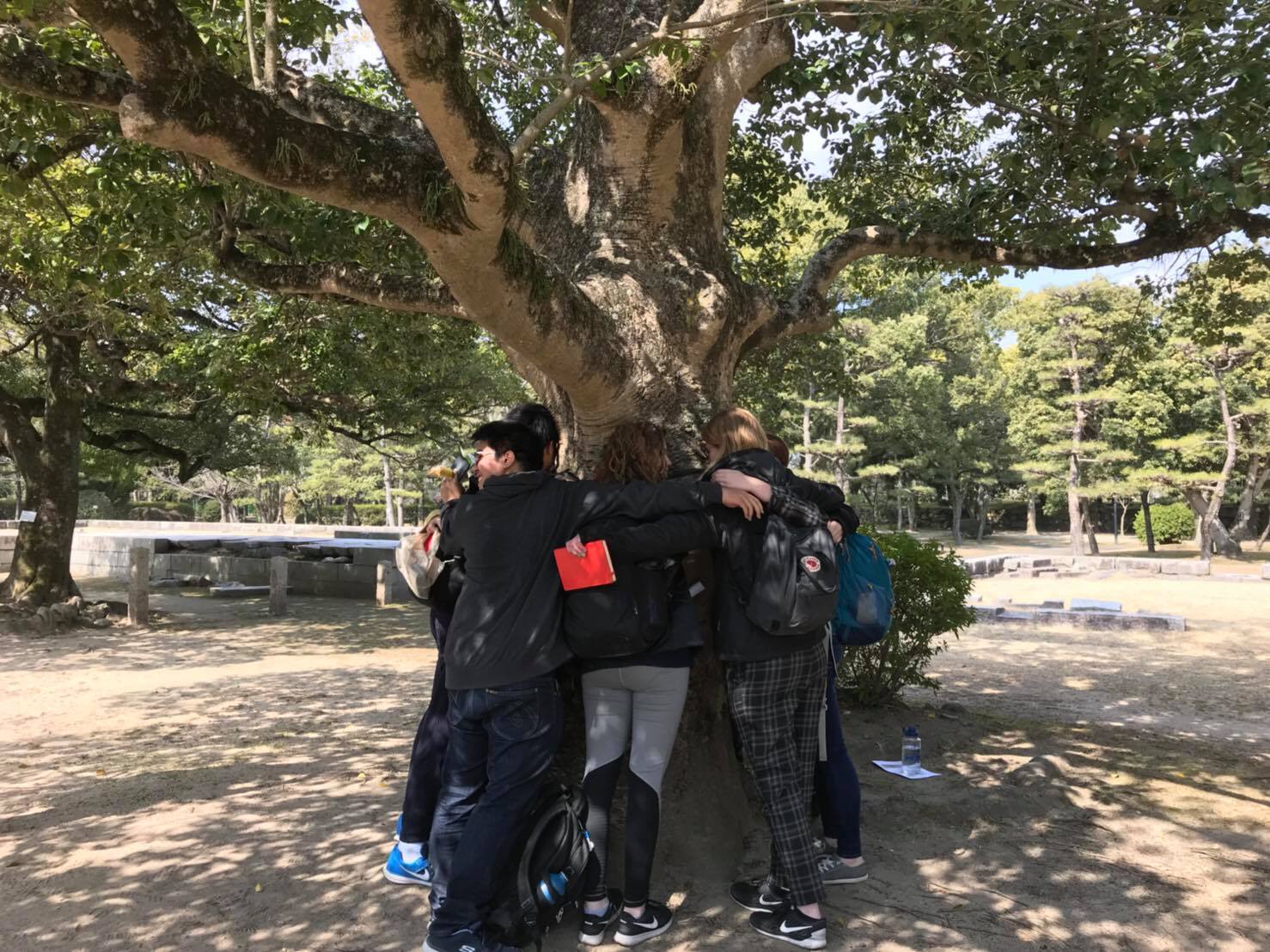For many years, ANT-Hiroshima’s activities have included introducing hibakujumoku (A-bomb survivor trees) to both visitors and locals. In addition to tours of varying size and formality, often led by Arborist Chikara Horiguchi, ANT staff also give lectures and kamishibai (a form of picture-based storytelling) performances about hibakujumoku. Additionally, a certain ANT intern recently tested a new, interactive lesson for students.
The objective of the interactive lesson, as opposed to a normal tour, was to foster a feeling of ownership in the students: ownership of both their own learning process and of the hibakujumoku’s stories. Through first examining the trees by themselves — albeit with help from ANT staff, their teachers, and a packet of hints — the students formed their own conclusions as to what each tree was telling them about the atomic bombing.

The lesson, guinea pigged by a group of energetic students from the traveling high school Think Global School (TGS), took the following form:
- Introductory lecture by ANT-Hiroshima
- Independent investigation of hibakujumoku by students
- Presentation of hibakujumoku to the class
The introductory lecture had two goals: to share what hibakujumoku mean to Hiroshima citizens and survivors of the atomic bombing, and to familiarize students with what characteristics they might be looking for when they examine the trees themselves. The group was also told to come having watched a video testimony of hibakusha Suzuko Numata, whose story is deeply connected with the hibakujumoku Chinese parasol trees living in Peace Memorial Park.

The class then left for Hiroshima Castle, where students split into four groups, each with their own hibakujumoku to get to know. A packet of hints was distributed to each group; the packet included a map, photos of the trees or area before or after the bombing (when available), and other relevant information tailored to each tree. Students had 40 minutes to examine their tree and plan a presentation introducing the tree to their classmates. Presentation guidelines included stating the direction of the hypocenter, positing which qualities of the tree they thought were an effect of the atomic bomb, and connecting their tree to something else they’d learned while in Hiroshima.
The whole group reassembled at one of the hibakujumoku and presentations began. After each group finished sharing, an ANT representative added to their findings or pointed out something they had missed. The students never failed to ask questions of their classmates or postulate their own theories as to why the hibakujumoku looked the way they did.

Although a few students had to leave immediately after the presentations, other stayed for a question and answer session with Arborist Chikara Horiguchi. Through the students’ questions, even ANT staff learned new facts and theories about the hibakujumoku at Hiroshima Castle. (Why had we never asked why that holly has roots on only one side?)
With this type of lesson, there was a chance that students would make mistaken assumptions about the trees that, unfortunately, could go uncorrected as the lively conversation raced ahead. However, their enthusiastic participation and the learning process ANT staff, teachers, and students all experienced during the lesson made the gamble worthwhile, and hopefully the students will continue inquisitively thinking about hibakujumoku.
If any readers are interested in participating in this kind of lesson, please feel free to contact ANT-Hiroshima. The first run with Think Global School gave us tips for how to keep improving, and we welcome new participants!


